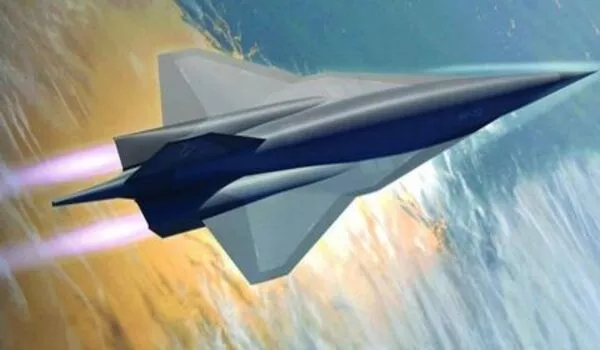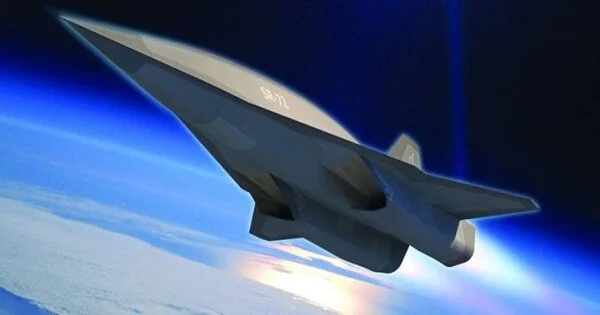Chuck Yeager, a U.S. Air Force pilot, became the first person to fly faster than the speed of sound nearly 75 years ago. Engineers have been pushing the limits of rapid flight ever since, reaching speeds that most of us can only conceive.
Military fighter jets such as the F-15 now routinely exceed Mach 2, which is shorthand for twice the speed of sound. That is supersonic speed. An airplane travels faster than 3,000 miles per hour on a hypersonic flight (Mach 5 and above). At that speed, you could go from New York to Los Angeles in your lunch break.
Since the 1950s, hypersonic speeds have been made achievable by the same propulsion technology used in rockets. Engineers and scientists are working on new jet engine designs to make hypersonic flight more widespread and significantly less expensive than rocket launches. These new concepts represent a huge possibility for commercial travel, space exploration, and national defense: hypersonic aircraft, for example, may be used as reusable launch vehicles for satellites.
Computer simulations assist in identifying what is possible before any aircraft is built and tested. Researchers have long utilized computational fluid dynamics (CFD) to forecast how an aircraft in flight will interact with the forces around it, among other things. CFD is a scientific discipline that focuses on quantitatively expressing the behavior of fluids such as air and water.
An airplane capable of breaching the sound barrier adds further complexities to an already computationally demanding activity. Researchers at the Department of Energy’s (DOE) Argonne National Laboratory and NASA are pioneering the use of artificial intelligence to expedite CFD simulations and accelerate the development of ground-breaking aircraft.
The exhilarating journey of supersonic flight results in equally exhilarating fluid dynamics. The airplane generates a shock wave as it exceeds the speed of sound, containing air that is hotter, denser, and has a higher pressure than the surrounding air. The air friction caused at hypersonic speeds is so severe that it might melt sections of a typical commercial jet.
Significant changes in air must be accounted for not only around the plane but also as it flows through the engine and reacts with fuel. Air-breathing jet engines, as they are known, pull in oxygen as they fly to burn fuel. In a traditional plane, fan blades propel the air forward. However, at speeds of Mach 3 and higher, the velocity of the jet itself compresses the air. These aircraft designs, known as scramjets, are critical to achieving fuel economy levels that rocket propulsion cannot. It’s been stated that flying them in hypersonic flight is like lighting a match in a hurricane and keeping it burning.

Because the chemistry and turbulence interactions in these engines are so complex, scientists have needed to develop advanced combustion models and CFD codes to accurately and efficiently describe the combustion physics, said Sibendu Som, co-author of the study and interim center director of Argonne’s Center for Advanced Propulsion and Power Research.
NASA has developed a hypersonic CFD code called VULCAN-CFD to study how combustion occurs in this volatile environment. The code operates on multidimensional flamelet tables, with each flamelet representing a one-dimensional representation of a flame.
The data tables store these various images of burning fuel in a vast collection that requires a large amount of computer capacity to process. In a recently published work, Argonne scientists applied machine learning approaches to lower the intense memory needs and computing expenses associated with simulating supersonic fuel burning.
Working with NASA allowed us to integrate our innovative discoveries into a cutting-edge CFD code, as well as further improve the innovations for more effective design and optimization of hypersonic jets, said Argonne computational scientist Sinan Demir, a research co-author.
The flamelet table, which was created using Argonne software, was used to train an artificial neural network. An artificial neural network, a subset of machine learning, is a computer that derives insights from data in the same manner as a human brain might. In this case, the network learned shortcuts to “answers” regarding how combustion happens in supersonic engine conditions by using values from the flamelet database.
Previous investigations into subsonic applications have verified the concept. The new study applies it to supersonic and hypersonic challenges, making use of Argonne’s Laboratory Computing Resource Center’s high-performance computing resources. The funding came from the DOE’s Office of Science and NASA’s Langley Research Center.
“The collaboration between Argonne and NASA is valuable because our models and tools can be efficiently applied to theirs,” Demir explained. “It’s a new technique of doing high-speed propulsion CFD simulations.”
The article describing the novel neural network framework, titled “Deep neural network based unsteady flamelet progress variable approach in a supersonic combustor,” was presented at the American Institute of Aeronautics and Astronautics SciTech Forum in early January.
The Hypersonic Air-breathing Weapon Concept developed by DARPA has successfully flown.





